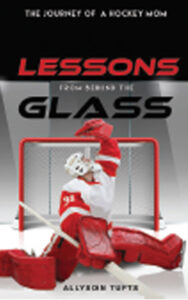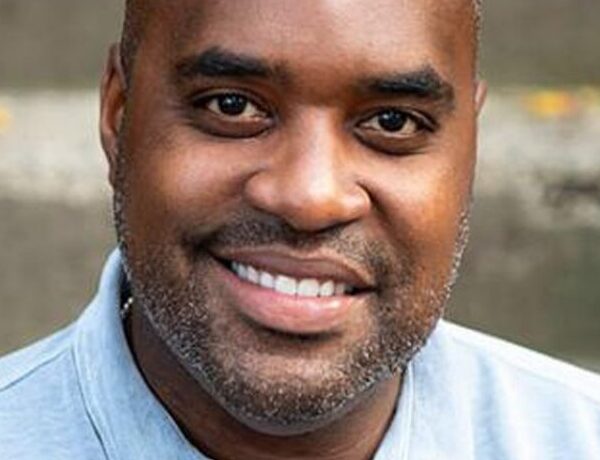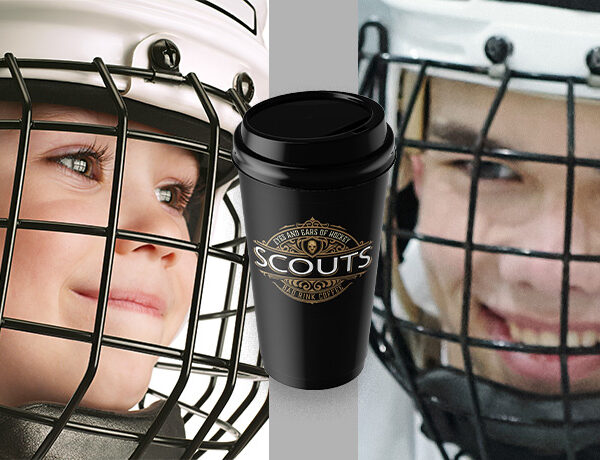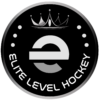Before he logged a 13-year career tending goal in the NHL that saw him play 508 regular season games with the Buffalo Sabres, Philadelphia Flyers, New York Islanders and New York Rangers, Martin Biron represented his home province of Quebec in both the Provincial Championships – which he won in 1992-93 – and at prestigious amateur tournaments like the Quebec Peewee International Tournament. Playing alongside his younger brother, Mathieu – who played 250 NHL games in his pro career – Martin Biron honed his craft as a pro, first with the Rochester Americans (whom he led to a Calder Cup Final appearance in 1999), then with all three New York-based NHL clubs, as well as the Flyers, whom he starred for in a run to the Eastern Conference Final in 2007-08.
The 43-year-old Biron now works as a successful NHL broadcaster from his home in Buffalo, but he relishes the chance to pass along valuable advice to young up-and-coming goalies. Biron took time to speak with Elite Level Hockey about tips for young netminders and the changes he’d like to see applied to the sport’s amateur side. (Read Part 1 of our interview with Biron, where we discuss his minor hockey career and the path that took him to the NHL.)
What is the best advice you can give to young goalies?
Martin Biron: It changes for me every year. First, I always thought it was to work on your technique. But you always have to be a good skater. People underestimate how important skating is for goalies. When I started playing, they’d put players who can’t skate in net. But my father told me, he said “it would be beneficial to you being a good skater”.
A friend of the family played goalie in senior hockey, and we’d do ups and down (butterfly exercises) and do a lot of skating, and all my coaches throughout my career emphasized skating. I’m so glad my dad stressed that. And if you don’t have fun, don’t do it. That’s a gimme when it comes to advice.
How does goalie training differ now from when you were in minor hockey?
MB: I think 12-year-olds are so much better than I was when I was their age. So many technical elements of the game I never knew until much later are taught at a very early age now. My style at 18 or 19 was different than it was much later. I also always say I don’t want kids to play just one sport. Play other sports, but if you’re going to spend a week going into a school, take the time to learn the position.
Is there anything you are seeing in minor hockey these days that you would change?
MB: Well, I don’t like kids changing organizations. Recruiting, I don’t like that part of it. When we played in our area, we just tried to make the team in our area. Now kids change teams at 12 and 13. Now, here in Buffalo, kids (who hail) from South Carolina, are on teams here. They have an uncle in Buffalo or something like that, so they come up here.
It’s almost more like the (big-league) market. The season isn’t over, and parents are already calling coaches and saying, “I want my kid to play for you”. So that’s much different than it was when I was at a young age. I left home when I was 16, but I was far from my parents. I saw them once every other week, and talked just for a half-hour at the rink. But I was lucky, I had people as billets who I felt like were my second family. But not everyone is that fortunate.
Any tips on breaking a goalie slump for a young player?
MB: A lot of it is mental, because you feel like everyone is watching you. I always say, “Go back to the basics.” A lot of times, goalies who struggle will try to change their games. I’d advise against that. Just be yourself, believe in what got you success. And always go back to your skating.
What is the best way to warm up as a goalie in minor hockey?
MB: A lot of it is hand-eye coordination stuff. Braden Holtby would do visualization stuff. I’m a Formula 1 (auto racing) fan, and they do a lot of things that heighten their vision before a race. In New York, I used to watch (star Rangers goalie Henrik) Lundqvist juggle three balls, and then he’d do it the other way. But just zone in. That’s my best advice.
What was your favourite practise drill as a kid?
MB: Well, I actually hated to do these, but they were beneficial: as a kid, we’d do these up and down ( butterfly exercises) all the time. When I was a kid, butterfly was just beginning. I hated to do it as a kid, but I would just do those constantly. It’s something that improves your game over time, and it improves leg strength and flexibility.
Did you have a goalie coach as a kid, or attend goalie camps? What are the benefits of doing so?
MB: A friend of the family was a goalie coach. I got him in junior one year. I did the (Francois and Benoit) Allaire goalie school, then I worked there for them. That was a way to really prepare for the season. I went to Switzerland with them one year. One coach who had a big impact on me was a man named Gilles Lachance – he was the one that installed a work ethic in me at 14 and 15 that I didn’t know I needed. He was instrumental in how my game improved and evolved.
The post Goalie Guild: Tips From Martin Biron appeared first on Elite Level Hockey.
















